We often don’t know what sort of journey our chapter FaceBook posts or ListServe notices will offer, but most guarantee interesting learning experiences.
I was recently intrigued with a workshop notice that talked about interpretive writing. If the words writing and workshop are in the same notice, my attention is usually piqued.
Think back to some of our initial Texas Master Naturalist training. We’re briefly introduced to interpretive speaking and the names of historic nature interpreters like John Muir and Freeman Tilden — along with their ideas for professional interpretations. This workshop seemed like it would be a good fit with some of my TMN volunteer activities.
I shared the notice with both our chapter and our sister TMN chapter in Pharr. Three Rio Grande Valley chapter members signed up for the day-long workshop entitled, “The Road to Great Exhibits,” that was offered at the San Benito Cultural Heritage Museum. The workshop was sponsored by Texas Historical Commission, Texas Department of Transportation, Bullock Texas State History Museum and Texas Association of Museums.
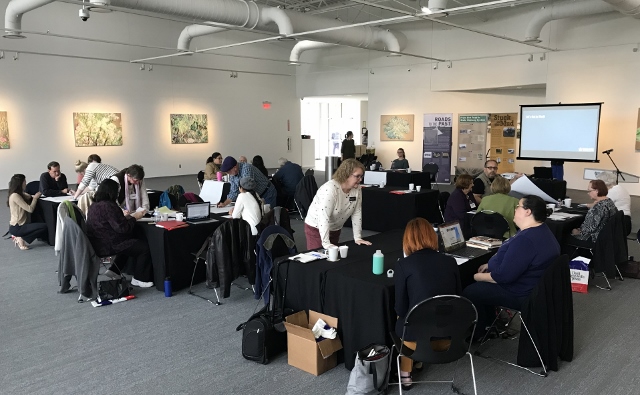
Although the workshop was primarily about museum displays, the ideas can easily be applied to libraries, nature park visitor centers — where many of us do volunteer work — and certainly to Texas Master Naturalist events and websites.
There were 20 participants. Fellow chapter master naturalists Eileen Mattei (freelance writer) and Chet Mink (artist) and I were on a team with Edinburg’s Museum of South Texas History Communication Director Pamela Morales (seated, left) and City of McAllen Public Library’s Reference Librarian Esther Camacho (standing at right).
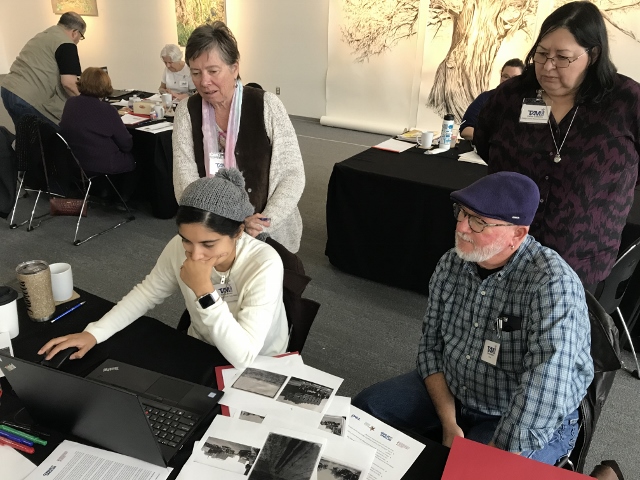
The morning session covered interpretive writing and elements of good design for creating stand-alone static displays.
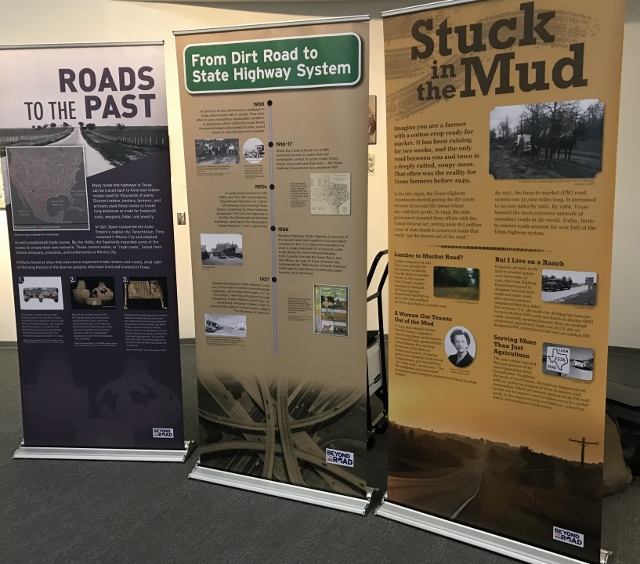
The afternoon session was about inexpensive, user-friendly software for designing website info pages, web pages and videos for digital exhibits.
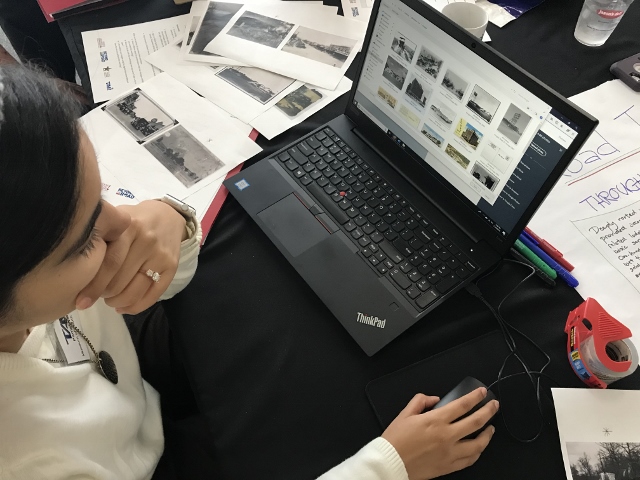
During a brief intro at the top of the morning, we were presented with a definition of interpretive writing taken from the National Association of Interpretations:
“. . . a mission-based communication process that forges emotional and intellectual connections between the interests of the audience and the meanings inherent in the resource.”
A key concept here is the word emotion. For instance, if a guide or author can prompt an emotion from a person or an audience, then it is more likely that a person or group of people will connect to what is being presented. Ultimately, the goal is to elicit respect and understanding from the audience, of the ideals that are being presented, not just provide the audience with sterile facts.
For instance, when we, as master naturalists, lead nature walks or give presentations, when we provide information about a critter or the habitat that explains how something can relate or benefit the listener, then we’ve hopefully engaged in one of the principles of interpretative writing/speaking — established a connection between nature and humans.
For the workshop, each team had the same assignments and the same scripted material for both the morning and afternoon projects.
The scenario was a well-researched, well-written, three-page article about the parallel development of roads-to-highways and lodging development as travelers’ needs changed through the ages.
Basically, from railroads and railroad hotels and boarding houses, to the invention of the auto, dirt roads and sleeping under the stars, to tent “parks,” better roads, more travelers, then on to auto camps, tourist camps, motor courts, motels and then full circle to multi-level hotels adjacent to highways as opposed to railroad hotels near railroad stations.
We could
We brainstormed a theme for our stand-alone display — we went from “Sleeping through Texas,” finally arriving at, and agreeing to, “Road Tripping through Texas.”
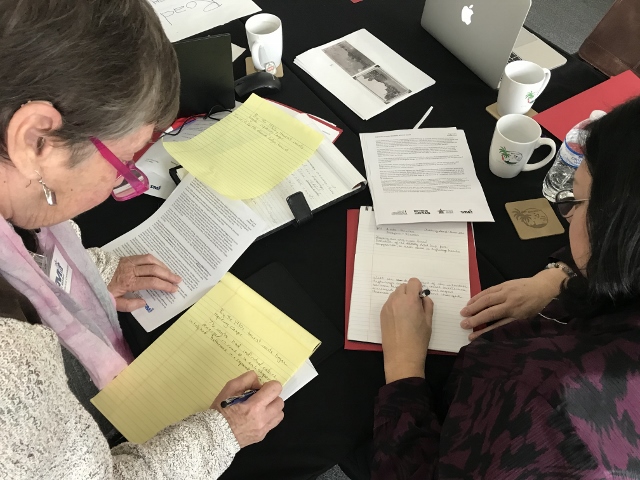
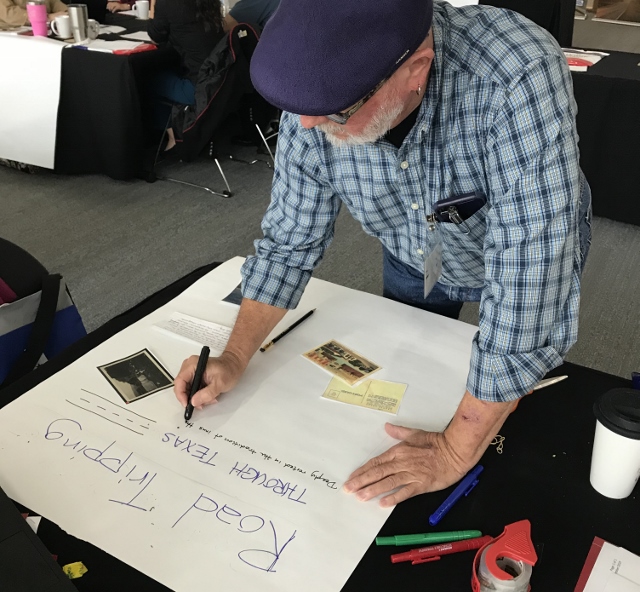
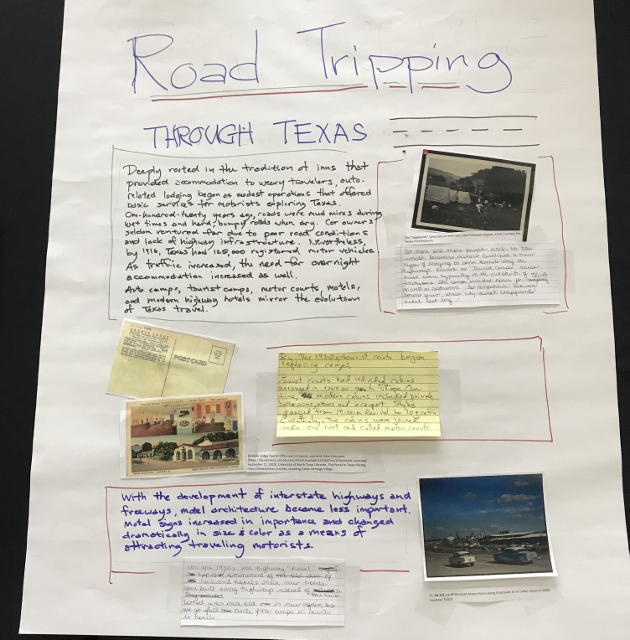
Interactive visual story telling. The afternoon electronic project was less limiting. We could choose more photos and use more information and text boxes. The options were to design a “digital interactive” using text and images. The choices were webpage, video or a “page,” using software called Adobe Spark.
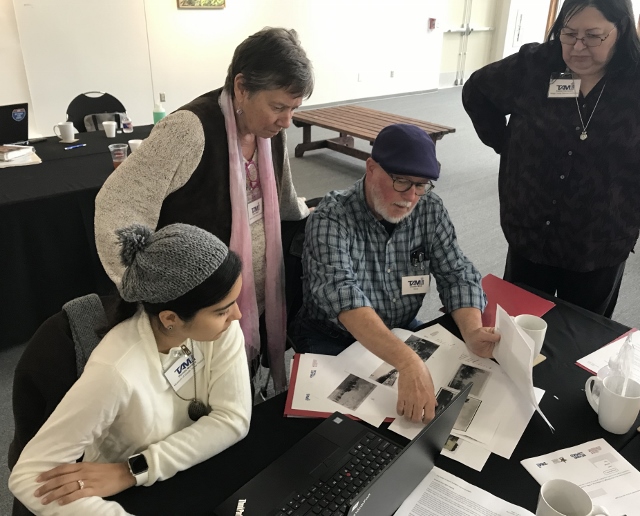
Our team chose to design a “page” since none of us were familiar with that type of product.
How this particular digital info idea can work: the finished product can be uploaded onto an iPad, the iPad is incorporated into a stand-alone museum (or nature center) exhibit. Ideally, the visitor can tap the iPad and the digital “display” rolls until the end.
Photos and text blocks are placed on a page similar to a PowerPoint slide. The text block placement can vary. One unique and interesting feature is that a text block can “float” independently of a photo scroll.
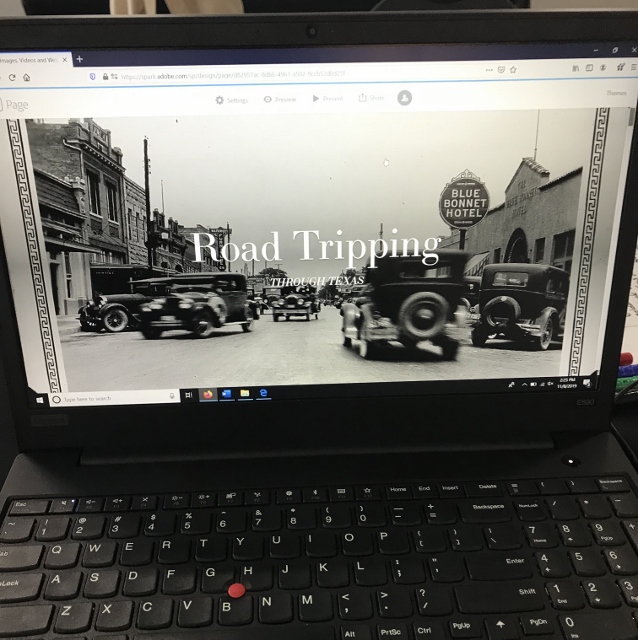
Interesting fact about length of time on technology exhibits: if a technology exhibit is more than two minutes and 30 seconds long, the museum (or facility) must provide seating. Five minutes is the optimal maximum time for a sitting digital exhibit.
For those interested in further reading about interpretive writing and speaking, Tilden (1883-1980) determined six principles of interpretation. He authored, “Interpreting Our Heritage,” which is available on Amazon in new or used books and Kindle.
